Showing Spotlights 617 - 624 of 2780 in category All (newest first):
 Scientists report the experimental results of studying the response characteristics in a millimeter wave band whispering gallery mode sapphire resonator to single-layer graphene at different distances of graphene from the resonator. They found that the evanescent field of the resonance system is extremely sensitive to the environment, surrounding materials and disk coatings. A series of experiments showed that such whispering gallery mode resonance can be used to detect the conductivity and thickness of the materials deposited on top and/or can even be used for advanced biosensing.
Scientists report the experimental results of studying the response characteristics in a millimeter wave band whispering gallery mode sapphire resonator to single-layer graphene at different distances of graphene from the resonator. They found that the evanescent field of the resonance system is extremely sensitive to the environment, surrounding materials and disk coatings. A series of experiments showed that such whispering gallery mode resonance can be used to detect the conductivity and thickness of the materials deposited on top and/or can even be used for advanced biosensing.
Nov 21st, 2018
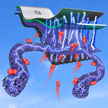 Recently, researchers have engineered a next-generation battery technology - known as metal-air batteries - which can be easily fabricated into flexible and wristband-like cells. Although metal-air batteries powered devices still are not ready yet for commercial applications, the current studies have established solid evidence that these devices have provided enormous opportunities to develop the next generation of flexible, wearable and bio-adaptable power sources. Researchers now report a solution to overcoming the current limitation on sluggish reaction kinetics of air cathodes in Mg-air batteries.
Recently, researchers have engineered a next-generation battery technology - known as metal-air batteries - which can be easily fabricated into flexible and wristband-like cells. Although metal-air batteries powered devices still are not ready yet for commercial applications, the current studies have established solid evidence that these devices have provided enormous opportunities to develop the next generation of flexible, wearable and bio-adaptable power sources. Researchers now report a solution to overcoming the current limitation on sluggish reaction kinetics of air cathodes in Mg-air batteries.
Nov 20th, 2018
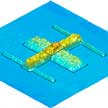 A novel nanoscale additive manufacturing technique termed Nanotribological Printing creates structures through tribomechanical and tribochemical surface interactions at the contact between a substrate and an atomic force microscope probe, where material pattern formation is driven by normal and shear contact stresses. This technique advances the field of nanomanufacturing by providing a versatile and easily accessible method for creating complex (multi-material) nanostructures, with high precision and uniquely superior mechanical properties.
A novel nanoscale additive manufacturing technique termed Nanotribological Printing creates structures through tribomechanical and tribochemical surface interactions at the contact between a substrate and an atomic force microscope probe, where material pattern formation is driven by normal and shear contact stresses. This technique advances the field of nanomanufacturing by providing a versatile and easily accessible method for creating complex (multi-material) nanostructures, with high precision and uniquely superior mechanical properties.
Nov 13th, 2018
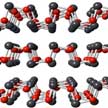 In recent years, black-phosphorus-analogue (BPA) two-dimensional materials have been demonstrated to exhibit promising optoelectronic performances and distinguished ambient stabilities, holding great promise in practical applications. In new work, researchers demonstrated that ultra-small 2D beta-lead oxide quantum dots showed fast carrier dynamics and significantly high photocurrent density and excellent ambient stability. These findings hold great potential for high-performance BPA-based optoelectronic devices.
In recent years, black-phosphorus-analogue (BPA) two-dimensional materials have been demonstrated to exhibit promising optoelectronic performances and distinguished ambient stabilities, holding great promise in practical applications. In new work, researchers demonstrated that ultra-small 2D beta-lead oxide quantum dots showed fast carrier dynamics and significantly high photocurrent density and excellent ambient stability. These findings hold great potential for high-performance BPA-based optoelectronic devices.
Nov 6th, 2018
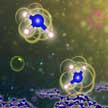 The ability to produce ammonia efficiently from air and water at room temperature and ambient pressure is of great interest in agriculture where it is used in fertilizers. In particular, the electrochemical reduction of nitrogen, in which the conversion of nitrogen to ammonia takes place under mild conditions, is highly relevant for the chemical industry that needs to cope with increasing demands for ammonia and at the same time is under pressure to reduce its ecological footprint. A new study describes novel single-atom catalysts as fascinating electrocatalysts for the application in nirtogen reduction.
The ability to produce ammonia efficiently from air and water at room temperature and ambient pressure is of great interest in agriculture where it is used in fertilizers. In particular, the electrochemical reduction of nitrogen, in which the conversion of nitrogen to ammonia takes place under mild conditions, is highly relevant for the chemical industry that needs to cope with increasing demands for ammonia and at the same time is under pressure to reduce its ecological footprint. A new study describes novel single-atom catalysts as fascinating electrocatalysts for the application in nirtogen reduction.
Nov 5th, 2018
 Researchers investigated the thermal conductivity and thermal diffusivity of epoxy composites with high loading fractions of graphene and h-BN fillers. They found that the graphene fillers outperformed boron nitride fillers in terms of thermal conductivity enhancement. The surprising finding is that, in the high loading composites with quasi-2D fillers, the apparent cross-plane thermal conductivity of the fillers can be the limiting factor for heat conduction. These results are important for developing the next generation of the thermal interface materials.
Researchers investigated the thermal conductivity and thermal diffusivity of epoxy composites with high loading fractions of graphene and h-BN fillers. They found that the graphene fillers outperformed boron nitride fillers in terms of thermal conductivity enhancement. The surprising finding is that, in the high loading composites with quasi-2D fillers, the apparent cross-plane thermal conductivity of the fillers can be the limiting factor for heat conduction. These results are important for developing the next generation of the thermal interface materials.
Oct 30th, 2018
 Researchers investigated the potentially protective role of nanoceria against oxidative stress associated with microgravity and cosmic radiations in space. Their findings support the application of antioxidant nanomaterials to skeletal muscle tissue culture for protection from the noxious effects of microgravity and cosmic radiations, which result in muscle mass and force loss and limit human operations and permanence in space. On Earth, these deteriorations are usually associated with aging or pathologies and are exhibited over longer time intervals compared to those occurring in space.
Researchers investigated the potentially protective role of nanoceria against oxidative stress associated with microgravity and cosmic radiations in space. Their findings support the application of antioxidant nanomaterials to skeletal muscle tissue culture for protection from the noxious effects of microgravity and cosmic radiations, which result in muscle mass and force loss and limit human operations and permanence in space. On Earth, these deteriorations are usually associated with aging or pathologies and are exhibited over longer time intervals compared to those occurring in space.
Oct 29th, 2018
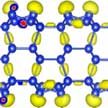 In the past few years, monolayer and multilayer silicenes have been successfully grown on various metal substrates. Unfortunately, silicene on metal substrate generally exhibits metallic or semi-metallic character without a bandgap, and thus cannot be used as adsorption layer of photovoltaic materials. A new comprehensive investigation of multilayer silicene by means of ab initio swarm-intelligence structure-searching method predicts that tri-layer silicene is an ideal candidate for high-efficiency photovoltaic absorbers.
In the past few years, monolayer and multilayer silicenes have been successfully grown on various metal substrates. Unfortunately, silicene on metal substrate generally exhibits metallic or semi-metallic character without a bandgap, and thus cannot be used as adsorption layer of photovoltaic materials. A new comprehensive investigation of multilayer silicene by means of ab initio swarm-intelligence structure-searching method predicts that tri-layer silicene is an ideal candidate for high-efficiency photovoltaic absorbers.
Oct 15th, 2018
 Scientists report the experimental results of studying the response characteristics in a millimeter wave band whispering gallery mode sapphire resonator to single-layer graphene at different distances of graphene from the resonator. They found that the evanescent field of the resonance system is extremely sensitive to the environment, surrounding materials and disk coatings. A series of experiments showed that such whispering gallery mode resonance can be used to detect the conductivity and thickness of the materials deposited on top and/or can even be used for advanced biosensing.
Scientists report the experimental results of studying the response characteristics in a millimeter wave band whispering gallery mode sapphire resonator to single-layer graphene at different distances of graphene from the resonator. They found that the evanescent field of the resonance system is extremely sensitive to the environment, surrounding materials and disk coatings. A series of experiments showed that such whispering gallery mode resonance can be used to detect the conductivity and thickness of the materials deposited on top and/or can even be used for advanced biosensing.
 Subscribe to our Nanotechnology Spotlight feed
Subscribe to our Nanotechnology Spotlight feed





